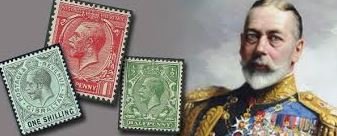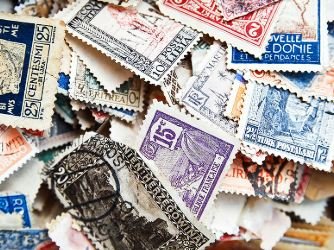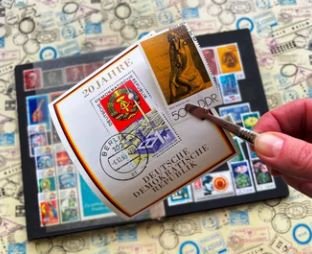Stamp Collecting Resources for Educators offers a unique and engaging way to bring history, art, geography, and culture into the classroom. As a hands-on, interactive activity, stamp collecting provides students with a tangible connection to the past, sparking curiosity and deepening their understanding of the world.
Stamp collecting, also known as philately, is a timeless hobby that offers more than just a way to accumulate colorful, historical pieces of paper. It’s a window into the past, a hands-on tool for teaching history, geography, art, and even math. For educators looking to inspire curiosity and foster a love of learning, stamp collecting resources for educators can be an incredibly powerful tool. These resources provide dynamic ways to engage students, encourage exploration, and teach valuable skills in a fun and interactive way.
In this article, we’ll explore how stamp collecting resources for educators can be used effectively in the classroom to ignite curiosity, deepen understanding, and offer students a unique learning experience that connects the past with the present.

Why Stamp Collecting Is a Valuable Educational Tool
Before diving into specific stamp collecting resources for educators, it’s important to understand why stamp collecting is such a valuable educational tool. Stamps, as small as they are, serve as cultural artifacts that reflect the historical, political, and artistic landscapes of the time in which they were created. Each stamp tells a story—a glimpse into different countries, their values, and the historical moments they chose to commemorate.
Using stamp collecting resources for educators in the classroom gives students a tangible connection to subjects like history, geography, and the arts. Through stamps, students can explore world cultures, examine historical events, and gain insight into the evolution of design and technology. The diverse subject matter on stamps—from famous landmarks to political figures to endangered species—offers endless opportunities for cross-curricular teaching.
Incorporating Stamp Collecting into the Curriculum
Integrating stamp collecting resources for educators into lesson plans can enrich a variety of subjects. Here are some practical ways to incorporate stamps into your teaching:
1. History and Social Studies
Stamps provide a fascinating way to explore history and social studies. They can serve as starting points for lessons on different periods, wars, and cultural movements. With stamp collecting resources for educators, you can introduce students to significant historical events, from the signing of important treaties to national revolutions.
2. Geography and World Cultures
Stamps are an excellent way to introduce students to the geography of different countries. Stamp collecting resources for educators can include maps, country fact sheets, and a global selection of stamps that help students learn about diverse nations and cultures.
3. Art and Design
Stamp collecting is inherently tied to the world of art and design. Every stamp is a miniature work of art, often designed by skilled graphic artists. Incorporating stamp collecting resources for educators into art lessons can inspire students to create their stamp designs. Teachers can guide students to study the visual elements on stamps, such as color, composition, typography, and symbolism.
4. Language Arts and Writing
Stamps offer a unique opportunity to integrate language arts into the classroom. With stamp collecting resources for educators, you can encourage students to write creative pieces inspired by the themes and stories depicted on stamps. For example, students can write short stories, essays, or poems based on the historical figures or events shown on a stamp.

In addition, stamp collecting can help students with descriptive writing. Ask them to describe the visual elements of a stamp in detail or to research the event or person it commemorates. This activity strengthens their writing skills and encourages critical thinking.
Practical Stamp Collecting Resources for Educators
Now that we understand the educational potential of stamp collecting, let’s explore some stamp collecting resources for educators that can be used in the classroom:
1. Stamp Collection Kits
Many educational organizations offer stamp collection kits specifically designed for teachers and students. These kits often come with a variety of stamps from different countries, historical periods, and themes. By using these stamp collecting resources for educators, teachers can introduce students to a wide range of stamps without needing to build a collection from scratch.
2. Digital Tools and Online Resources
In today’s digital age, there are numerous online platforms that offer stamp collecting resources for educators. Websites like the American Philatelic Society and the Royal Philatelic Society offer lesson plans, interactive activities, and digital stamp albums that can be accessed from any classroom. These resources make it easy for teachers to introduce stamp collecting to students, even if physical stamps aren’t readily available.
There are also digital stamp collecting apps and games that help students learn about philately in an interactive way. These apps allow students to view and organize stamps virtually, offering a modern twist on traditional stamp collecting.
3. Stamp-Related Activities and Projects
In addition to collecting stamps, teachers can utilize stamp collecting resources for educators to develop hands-on activities and projects that align with curriculum goals. Activities could include:
- Creating a Stamp Album: Students can build their own stamp albums, learning how to categorize stamps by country, theme, or historical period.
- Designing Custom Stamps: After studying famous stamps, students can design their own, using the same principles of design and historical themes.
- Writing a Research Paper: Students can choose a stamp from a specific historical event or person and write a research paper detailing its significance.
These projects not only make learning more interactive but also give students the opportunity to practice important skills such as research, organization, and critical thinking.
Benefits of Using Stamp Collecting in the Classroom
Incorporating stamp collecting resources for educators into your teaching brings several benefits to both students and teachers:
- Engagement: Stamps are visually appealing and often spark curiosity, making them an engaging way to introduce new topics.
- Hands-On Learning: Stamp collecting is a tactile activity that encourages students to interact with historical content tangibly.
- Cross-Curricular Learning: Stamp collecting easily bridges multiple subject areas, providing a holistic approach to learning.
- Critical Thinking: Researching stamps and their historical context helps students develop important analytical and problem-solving skills.

How to Find Rare Stamps is a pursuit that combines history, art, and the thrill of discovery. Whether you’re a seasoned collector or just beginning your stamp-collecting journey, the search for rare stamps is a challenge that every enthusiast embraces. These elusive treasures—ranging from limited editions and misprints to stamps from bygone eras—hold both historical and monetary value.
Conclusion: Inspiring Curiosity and Learning Through Stamp Collecting
In conclusion, stamp collecting resources for educators offer a wealth of opportunities to inspire curiosity and foster a love of learning in students. By integrating stamps into your classroom, you not only teach history, geography, art, and language but also provide students with a hands-on, interactive way to explore the world around them. Whether you use physical stamps, digital resources, or creative projects, stamp collecting is a powerful educational tool that can spark imagination, inspire critical thinking, and deepen students’ understanding of the world’s cultures and history. So, dive into the world of philately, and watch your students’ curiosity grow as they discover the wonders of stamp collecting.



